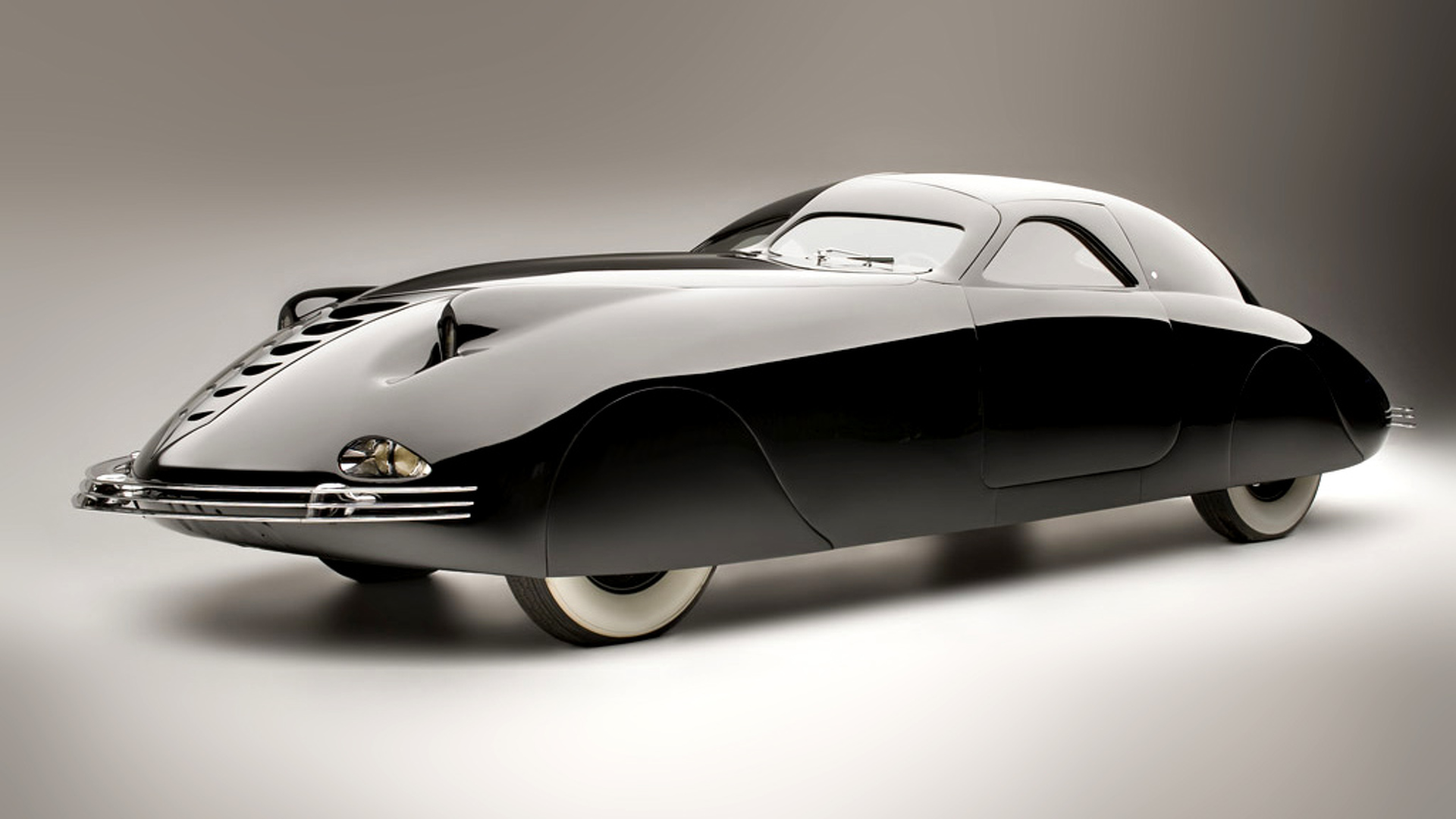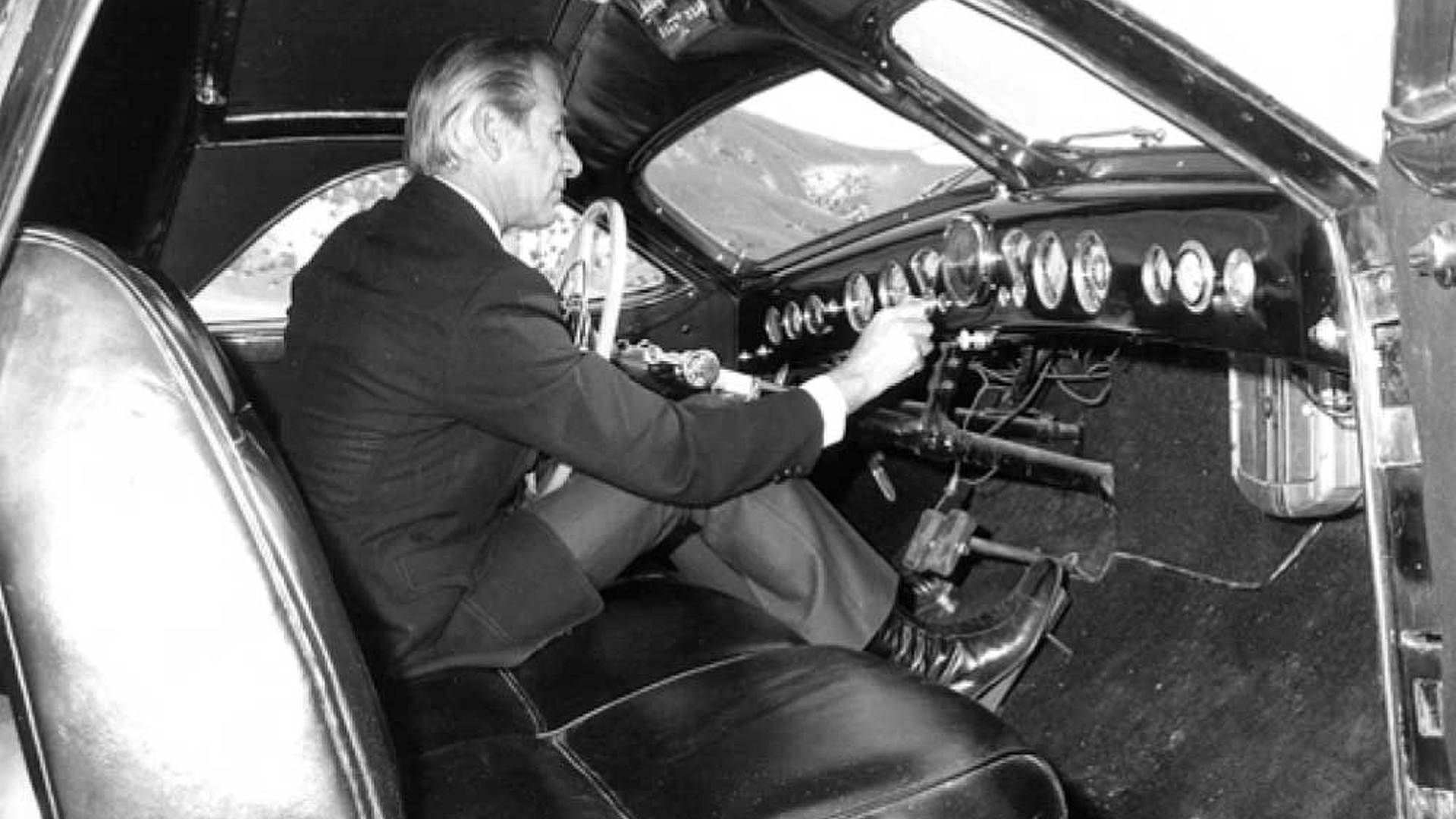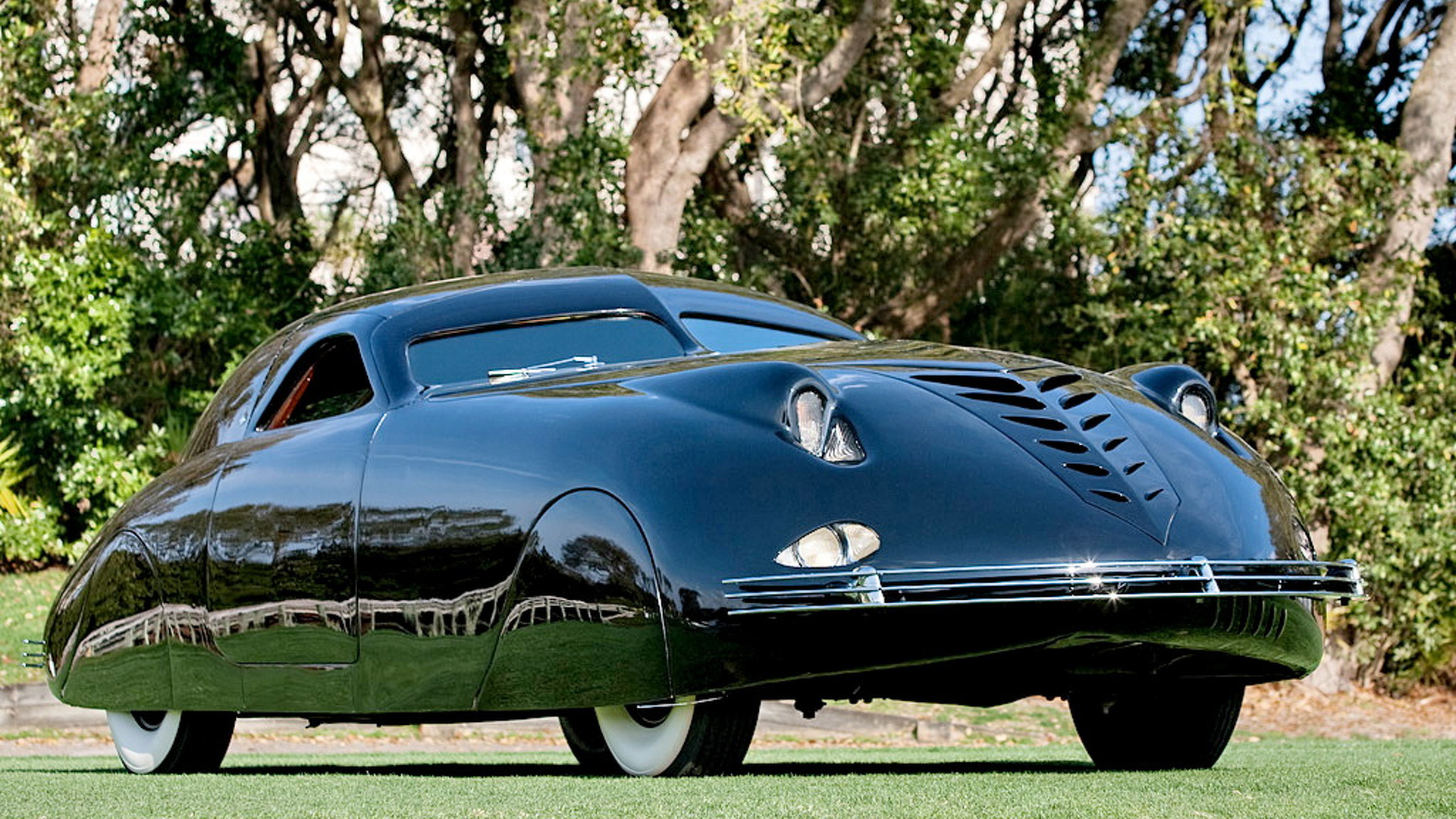Our time machine was programmed to take us to 1938, when Rust H. Heinz introduced Rust Corsair.
Why Do We Remember It Now
It was considered to be a pioneer in its day and featured an impressive body with an interior that could seat up to six people.
Rust Heinz, a Yale dropout who didn’t want to get involved in the family business, created it. Heinz, then 22, bought a new Cord 810/812 in 1936. This was the foundation of what would become the Phantom Corsair. He reached out to Pasadena coachbuilder Bohman & Schwartz in order to realize his dream. Then, work began based on Heinz’s sketches.

In the wind tunnel, the sleek aluminum fastback body was brought to life. It was then widened to accommodate the fully-enveloped tires that gave it a clean appearance. Each aluminum panel was individually hand-built and the headlights for the car were designed specifically. The telescopic supports that support the chrome fenders had to also be designed from scratch.
It was also very special. It could seat six people in a 4-by-2 configuration. The interior even had push-button doors and green-tinted Windows. It was equipped with a number of buttons and knobs that had an aeronautical theme.
The Phantom Corsair weighed more than 4,600 lbs (2,086 kgs). It had the same 4.7-liter V8 motor as the Cord 810/812. It was powered by a 4.7-liter V8 engine, which produced 125 horsepower and 190 horsepower. The front axle received the power through a four speed automatic gearbox. The car was capable of reaching 115 mph (185 km/h), which was quite impressive for the 30s.

The car was not perfect mechanically. The small front louvers, for example, restricted engine cooling and caused the 4.7-liter to heat up quickly. It looked great, but the split windshield didn’t provide much visibility. The same was true for the rear window.
Rust Heinz is believed to have spent over $24,000 to realize his dream. He actually wanted to launch an affordable production version, with a target starting price of close to $15,000. To spread the word, he advertised the car and was featured in Esquire. The car was featured in David O. Selznick’s film “The Young in Heart”, and promoted at the 1939 World Fair as “The Car of Tomorrow”.

Heinz, who was 25 years old, was killed in a car accident and the Phantom Corsair was never made again. The car was purchased by the Heinz family in the 50s by comedian Herb Shriner. He asked Albrecht Goertz, a BMW 507 designer, to make some modifications. To improve engine cooling, the front fascia was changed. The windshield was also modified to improve visibility. Two targa-like panels were added to the roof.
William Harrah, a casino tycoon, bought the Phantom Corsair later and restored it back to its former glory. The one-off vehicle has been seen at many car events including the Goodwood Festival of Speed, and the Pebble Beach Concours d’Elegance. The National Automobile Museum in Reno can now display the car.